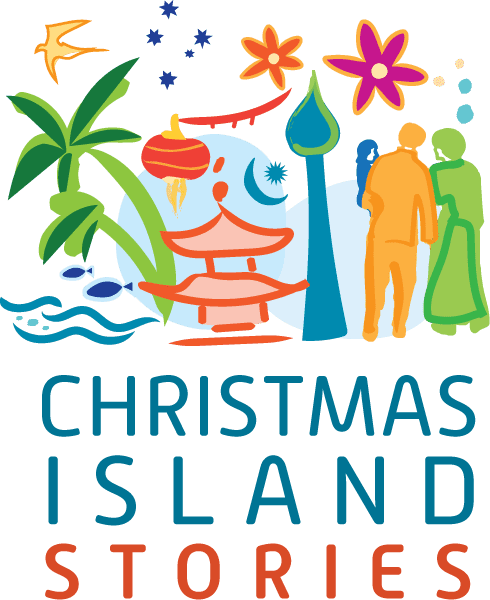Fishing on CI
From the earliest days of its settlement, fishing has been an essential part of life on Christmas Island.
With a landmass of only 135km2, Christmas Island didn’t have enough space to support enough crops or livestock to feed its population.
But what it lacks in arable land, the island more than makes up for with an abundance of fish in its temperate waters.
For generations of Christmas Islanders, subsistence fishing was how they fed their families.
Today, fishing on Christmas Island is no longer a matter of life and death – although some particularly passionate anglers might disagree.
The establishment of modern supply chains that make other goods readily available is one reason locals no longer have to fish for their supper.
The other is the advent of commercial fishing on the island, which for the first time gave people a way to get a fresh fish on the without having to catch it themselves.
The arrival of commercial fishing in the island’s waters was prompted by the opening of the now-defunct casino in the 1990s and the resultant boom in tourism from Singapore and Indonesia.
Six commercial fishing licences were issued to meet skyrocketing demand from the influx of tourists.
Sixty-one-year-old Mark Rochfort was in that first class of commercial fishing licence holders and to continues to operate on Christmas Island to this day, as well as running a local tackle shop.
“Our market then was targeting Singaporean and Indonesian gamblers visiting the casino, who were looking for lots of reef fish or bottom fish, what we call demersal species,” he recalls.
The closure of the resort and casino in 1998 meant commercial fishing became less profitable and the number of operators dwindled to two.
Looking back, Mark believes the casino’s closure was necessary to prevent catastrophic damage to the local demersal fish stocks.
“Demersal fish are residential, if you hit them hard, then you will have an impact on stocks,” Mark explains.
“There was never any work done on monitoring, but our casino was only open for four or five years and I believe it did have an impact on the demersal species in that time.”
Christmas Island’s demersal fish population is particularly vulnerable due to its unique geographical features that limits the habitat for reef fish.
“Christmas Island is a sea mount with no fringing reefs as such, so there’s very little habitat for those demersal fish so it’s really hard for them to recover,” he says.
While Christmas Island’s demersal fish community lacks an abundant habitat, it is overflowing with species diversity.
The island is one of the few locations in the world where Indian and Pacific Ocean fish swim in the same waters, leading to increased instances of interbreeding between species that wouldn’t otherwise interact.
As a result, Christmas Island’s fish community has recorded at least 11 different fish hybrids – the most of any fish community in the world – making it a marine hybridisation zone of international significance.
Thankfully, commercial fishing on Christmas Island today poses no threat to this unique phenomenon.
“These days we tend to fish a bit differently,” Mark says.
Instead of demersal fish that were popular with tourists, Mark’s commercial fishing endeavours focus entirely on pelagic species like wahoo and tuna to supply local restaurants.
“Pelagic fish are a much more sustainable type of fish to target because they don’t live here – they’re migrating fish just moving through,” Mark says.
Of course, targeting a particular species doesn’t always mean that’s the only species you’ll bring in. Bycatch – the incidental capture of non-target species – is a significant issue in the global fishing industry.
Fishing trawlers, mammoth vessels trailed by enormous nets that indiscriminately capture everything in their path, are the worst offenders – accounting for half of bycatch in the world, despite contributing only 20 per cent of global fishing production.
The method Mark employs, trolling, could not be more different to trawling, despite having a similar name.
Instead of a net and a winch, Mark sets rods and reels with lures on the back of his six-metre boat and traverses the deep water where tuna and wahoo can be found.
“I’m out there, one person on my own, there’s nothing electric or winches or anything, it’s just a good quality rod, reel and lures that we put out the back and away we go,” he explains.
Although no method is perfect, the hand-caught approach Mark employs cuts the amount of bycatch right down.
“Occasionally a shark will take our fish on the end of the line,” Mark says.
“Other than that, there’s very little bycatch, so we’re not impacting anything we don’t want to take.”
Although Mark’s quota is for five tonnes each year, a range of factors have meant that he hasn’t brought in that volume for several years.
One reason is an unprecedented three straight years of La Nina cycles that has made the water too warm for Mark’s target species.
Another is the accessibility of deep water, which presents unique opportunities and challenges for a commercial operation on fishing-mad Christmas Island.
Pelagic fish species are typically found in the open ocean, but the same geography that hampers reef fish makes Christmas Island the ideal place to catch these bigger fish.
“Access to the fishery is so easy because it’s so deep so close,” he explains.
“Literally within two minutes of launching your boat, you can be fishing for these big fish.”
While this means that Mark can catch all he needs to early in the morning and be ready to open his tackle shop at 9am, it means recreational anglers on the island can do the same thing.
“There are times that I describe the fishing here as famine or feast,” Mark says.
“The recreational fishermen can access the same fish stocks that I’m accessing.
“When there's lots of fish, I can go out and catch lots of fish, and for a few days I will sell all my fish, but it doesn't take long, when there's a lot of fish around, that everyone else is catching fish as well, and then it gets really hard to move my product.”
In true Christmas Island fashion, Mark doesn’t get too bothered when demand for fish drops off – those same recreational fishers are his most frequent customers at his tackle shop and he happily shares tips and tricks with anyone who asks.
Although access to Internet, television and other forms of entertainment on Christmas Island has improved in the past couple of decades, recreational fishing remains an enduring pastime for Christmas Islanders of all ages.
Mark attributes this to a combination of warm weather, the relative size of the fish and Christmas Island’s Muslim population, including many of his wife’s extended family.
“Most of the local guys that fish are Malay, Muslim people,” he explains.
“They don’t drink, so the boys don’t go to the pub and things like that, they go fishing.”
Despite its popularity, recreational fishing on Christmas Island is characterised by the moderation of the local community.
There’s perhaps no better example of respect for the marine environment shown by Christmas Islanders than the continued existence of what is known locally as the ‘GT farm’.
Named for the giant trevally (GT) that first gathered there to feast on Mark’s commercial fishing scraps, the farm is anything but.
In many places around the world, the hungry fish would be too tempting target for trophy hunters wanting to show off on social media, but there’s an unwritten rule among the Christmas Island’s anglers not to catch the 40-kilogram beasts that has seen it become a popular attraction for divers instead.
The island’s sustainable fishing culture was rewarded recently with an exceedingly rare opportunity for the community to manage its own fishery.
For much of the past 25 years, Christmas Island fell under the jurisdiction of WA Fisheries, but the tyranny of distance meant fishing regulations were difficult to enforce from the mainland.
As part of the process of creating the new Christmas Island Marine Park, Mark and other local fishers formed a Fisheries Management Committee, which was tasked with designing a set of rules for fishing on the island.
Each proposed regulation was discussed, put out for comment and voted on by the local community. The level of consultation meant that these new regulations were overwhelmingly supported where those imposed from the mainland had always been rejected.
A primary goal of the new regulations was to protect the marine environment, while also preserving the right to fish that has become a way of life for many on the island.
One of the ways this was achieved was by limiting the amount of fish someone could take off the island to 10 kilograms and banning unaccompanied fish from leaving the island.
“The idea is that Christmas Island fish are for Christmas Island people,” Mark explains.
“We don’t want people coming up here just to fill their eskis with fish and take it away with them.”
Although Christmas Island’s fishers demonstrated impressive unity in designing and agreeing on their own regulations, the community isn’t above a bit of friendly rivalry.
The annual fishing competition held around Territory Day in early October is a highlight of the year for local fishers.
A tradition that pre-dates Mark’s arrival on the island, he has taken over responsibility for running it, offering sponsorship support with vouchers for his store as well.
The format is simple, participants have 12 hours to bring in the biggest fish they can, with some exceptions.
Eligible species are restricted to those that are generally consumed to prevent the catch going to waste, so billfish, sailfish and marlin are banned, as well as giant trevally to prevent people simply raiding the GT farm.
No matter who wins in a given year – whether it’s a young gun like Mark’s 14-year-old nephew or a wily veteran like his wife’s uncle – the spirit that underpins the fishing competition exemplifies what makes Christmas Island such a special fishing community.
With the new regulations and marine park now in effect, there’s renewed hope it can stay that way for generations to come.


